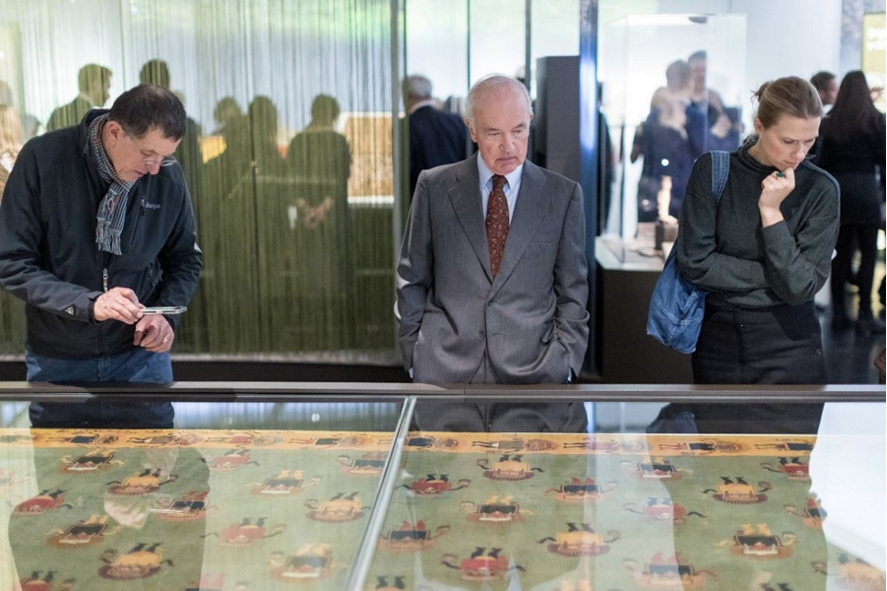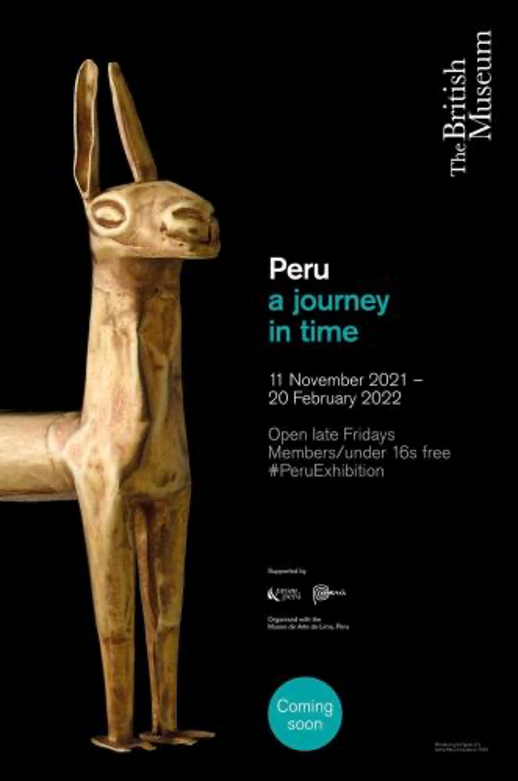
Peru´s cultural wealth is displayed at the British Museum in London thanks to an initiative and historical loan of objects that will travel from Peru for a new and important exhibition of ancient Peruvian cultures, PromPeru has reported.

The exhibition titled “Peru: A Journey in Time” opened its doors on November 11, 2021, and will run thru February 20, 2022. During that time, more than 40 extraordinary objects —some of them dating back to 3,500 years ago— will arrive at the British Museum from nine museums throughout Peru. Most of them had never been to the UK before.
“Peru: A Journey in Time” is organized in cooperation with the Lima Art Museum, the Ministry of Culture, the Gartner Collection, the Temple Radicati Foundation – San Marcos National University, El Brujo Archaeological Complex | Augusto N. Wiese Foundation, ‘Santiago Uceda Castillo’ Museum – Huacas de Moche Archaeological Project, Kuntur Wasi Museum, Larco Museum, National Museum of Archeology, Anthropology and History of Peru, and Amano Pre-Columbian Textile Museum.
The exhibition will show six civilizations spanning 3,000 years of history, from the primitive culture of Chavin to 1200 BC until the fall of the Incas in 1532. Visitors will discover how native peoples thrived in one of the most challenging and geographically diverse regions in the world, adapting to territories ranging from arid deserts along the Pacific coast, high mountains through the Andes, and the Amazon rainforests in the east.
Among the objects to be displayed are an impressive 2,500-year-old gold headdress and a pair of earmuffs that were part of an elite tomb found at the Kuntur Wasi site in Cajamarca. A striking ceremonial drum dating from around 100 BC – 650 AD will also be on display, which was used in rituals during the capture of enemies defeated in combat —one of the main scenes of the Nazca worldview.
The oldest item to be loaned will be a ceremonial vessel from the Cupisnique culture, which developed along what is now the northern Pacific coast of Peru, and is believed to date back to 1500 BC.
“A single step through the doors of the British Museum is always the first step on a journey, and with this exhibition we invite visitors to traverse the history of one of the most captivating regions. The magnitude of the generous loan of antique objects from museums in Peru provides a historic opportunity to appreciate them in the UK,” British Museum Director Hartwig Fischer said.
“The fascinating range of material on display collectively challenges perceptions of how the world can be seen and understood. We appreciate your support from PromPeru for making all this possible,” he added.
The exhibition will be shown chronologically through six sections and will bring the past to the present.
The first, Living Landscapes, will explore how Andean peoples have adapted to the difficult environment of the region. It will show how —for the Andean people— nature itself is a living being that sustains all life and is woven into shared belief systems in which the natural and supernatural worlds are intimately connected.
Next, visitors will discover primitive cultures, including the Chavin (1500-500 BC), before a section dedicated to life and death in the desert and how the Paracas and Nazca peoples lived on the southern coast of Peru —one of the driest places on the planet.
The following stage of the journey will focus on the Moche (100-800 AD) and the Chimú, (1000-1400 AD), who dominated the coast and the interior valleys of the north of the country.
Afterwards, the exhibition will focus on the two great empires of the central Andes highlands, the Wari (600-900 AD) and the Incas (1400-1532 AD).
The tour ends with a look at the Andean legacy, and how today’s Peru reflects a combination of cultures, religions, and transformations of the last 3,000 years.